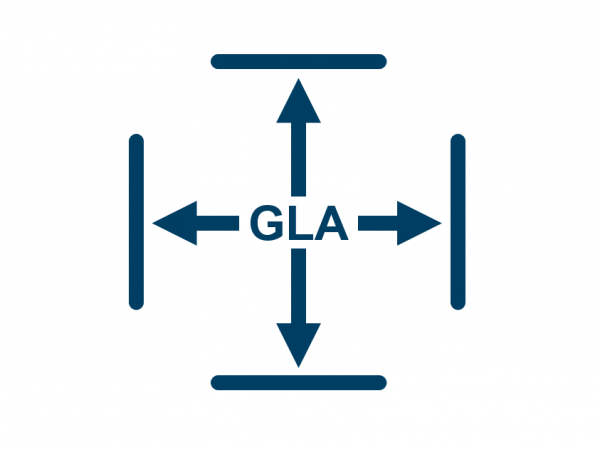Gross lettable area, also known as gross leasable area, is more commonly referred to by its commercial real estate (CRE) abbreviation GLA.
It describes the rentable area of space like office, warehouse, factory, or shops.
This is the space that a commercial property landlord bases his rent and expenses charges to a tenant on.
Gross lettable area is normally expressed in square meters or square feet.
A synonym for GLA is “rentable area” (or RBA).
Commercial real estate insider info
The values displayed for rent by landlords are generally inclusive of common facilities aka “common areas“. Thus, your paced-out area occupied (aka usable area) is different to the gross lettable area value that is on your rental invoice. (Whether this is perceived right or wrong – there are cases for both arguments – this is the global industry standard).
Dealing with an example
- You as tenant see 500 sqm rentable area / GLA on your rental invoice / lease agreement / offer to lease.
- You pace out your office, but count only 450 sqm (usable area).
- That extra 50 sqm is your calculated pro rata share of the common facilities/”common areas” (required for your 450 sqm usable area to be “live-able”)
- 450 sqm usable area + 50 sqm common facilities/”common area” space = 500 sqm.
- Calculation of the 50 sqm common facilities/”common area” share: the 450 sqm is 10% of the total 4,500 usable area office space. The common facilities/”common areas” are 500 sqm. 10% x 500 sqm = 50 sqm.
Gross lettable area and tenant costs
- That space categorised as GLA is used to assign both rentals and expenses to tenants.
- For example, let’s say there is 150 sqm of office.
- Office rental of R120 / sqm and rates and taxes recoveries of R25 / sqm will be applied to the 150 sqm.
- There is another category of space, falling outside the definition of GLA, supplementary area – rent attracting, that does not attract expenses. Such space is generally made up areas like office storage, terrace, yard etc. So, while, a space-driven rental is charged, expenses for this space are not allocated to the tenant.
- For example, let’s say there is a terrace of 20 sqm.
- Terrace rental at R60 / sqm will be charged on the 20 sqm space.
- But no share of the other costs will be assigned to the 20 sqm.
More information
For more technical information on gross lettable area – check out this link.
To see how the different space types in CRE are managed – gross lettable area, supplementary space rent attracting, and supplementary space not rent attracting, please see here.








